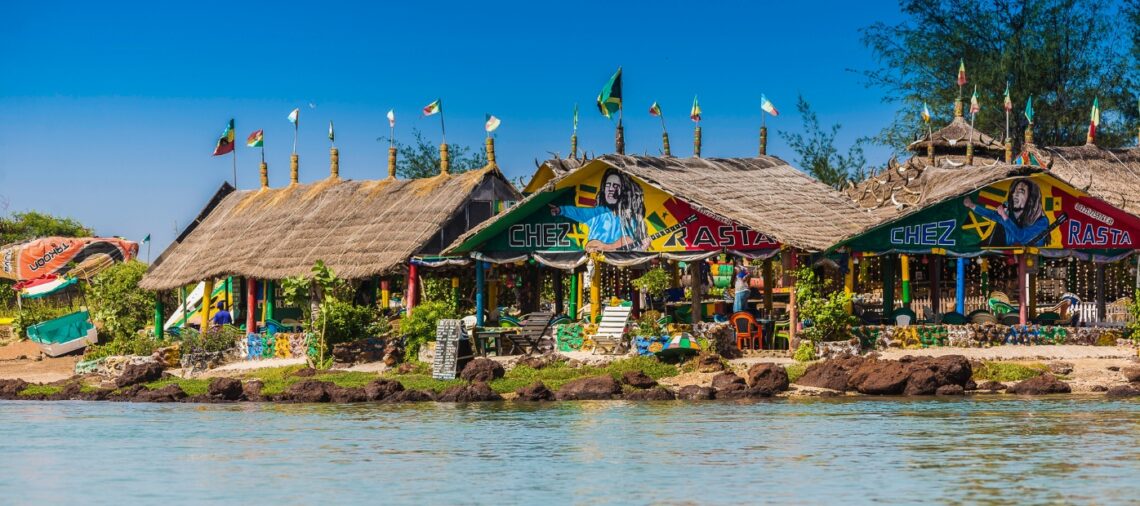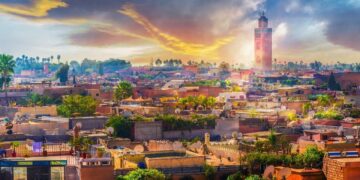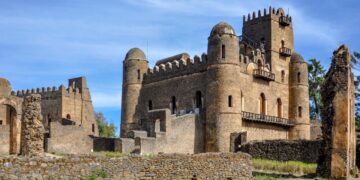Intriguingly nestled within the embrace of the shimmering Atlantic coast of West Africa, Senegal emerges as a mesmerizing mix woven from the threads of history, culture, and landscapes that paint an indelible mark upon the canvas of travel enthusiasts’ hearts. Step into this vibrant realm, and you’re immediately greeted by a harmonious chaos—a symphony where the notes of tradition dance with the avant-garde, and the whispers of nature compose a melody of awe. Let’s go on a virtual journey and find out the best tourist attractions in Senegal and much more information about this beautiful African country.
Behold Dakar, the heartbeat of Senegal, where the old and the new engage in a graceful tango of existence. Navigate the labyrinthine alleys of vibrant markets, where colors converge in a kaleidoscope of offerings while the cadence of local life reverberates through the thoroughfares, carrying with it tales of generations. Yet, the city’s embrace extends beyond its bustling exterior; it opens its arms to embrace the serenity of natural marvels. Lake Retba, a whimsical creation with its blushing pink waters, is a testament to Senegal’s union with the extraordinary. A testament to the unexpected, this saline marvel whispers secrets of ages past, leaving you in rapt contemplation.
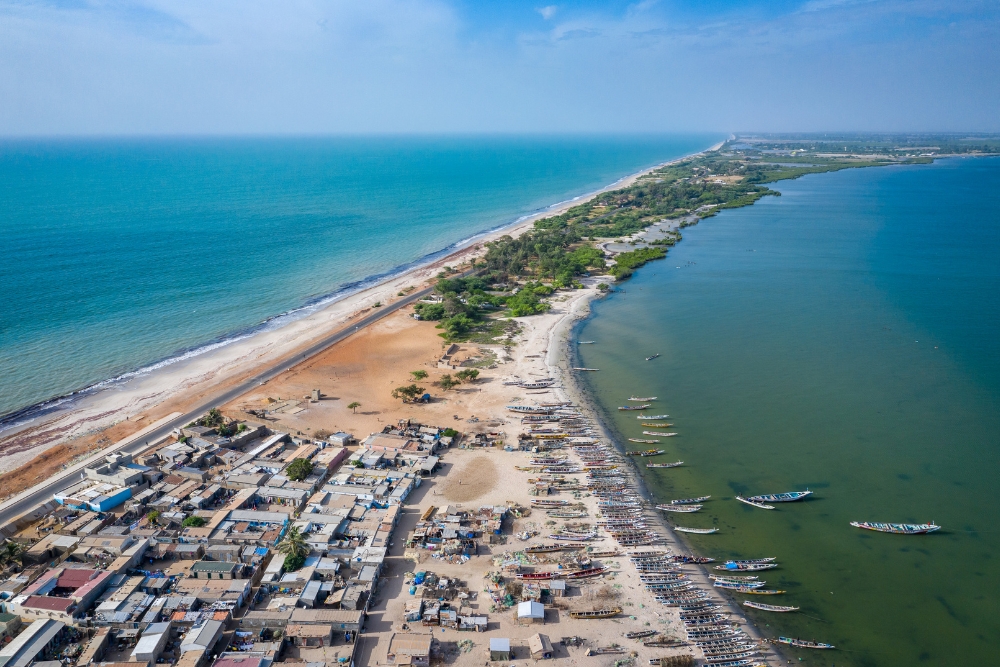
Venture further to Gorée Island—a hallowed ground cradling history’s weight in its embrace. A UNESCO World Heritage site, it stands as a somber sentinel, its shores echoing the haunting stories of a tumultuous past. And then, like a passage through time’s mist, the enigmatic stone circles of Wassu emerge from the landscape, akin to sentinels of antiquity, evoking wonderment and questions that float like shadows in the mind.
Senegal’s story, however, extends far beyond the embrace of cityscapes and the enigma of ancient relics. It’s a story woven by the hands of its people—a landscape of festivals that explode in a riot of colors, each brushstroke a stroke of culture’s legacy. Like the land, the people are warm and inviting, enveloping you in their hospitality like a cherished friend returning home.
So, let curiosity be your compass and adventure your guide as you embark on a journey through Senegal’s mosaic of wonders. It is a journey that not only introduces you to the tourist attractions of Senegal but invites you to partake in the living, breathing narrative of a nation that wears its history not as a burden but as wings that carry it into the future.
Here you have the best hotels in Dakar
Do you want to go to Senegal? Here you have the best flight tickets to Senegal:
- Best tourist attractions in Senegal
- 1. Gorée Island
- 2. Djoudj National Bird Sanctuary
- 3. Lac Rose (Pink Lake)
- 4. Saint-Louis
- 5. Niokolo-Koba National Park
- 6. Casamance
- 7. Cap Skirring
- 8. Joal-Fadiouth
- 9. Saloum Delta National Park
- 10. Dakar
- Tips and tricks for those who want to travel to Senegal
- 1. What are the essential travel tips for visitors planning a trip to Senegal for the first time?
- 2. Which is the best time of the year to visit Senegal?
- 3. What are the primary entry points for international travelers arriving in Senegal?
- 4. Is Senegal a safe country? What safety precautions should you take and where?
- 5. What are the best 3 Senegalese dishes for travelers to try during their visit?
- 6. What are the available options for transportation within the country, and which is the most practical for tourists?
- 7. How do local customs and etiquette vary across different regions of Senegal, and what should travelers be aware of?
- 8. Could you provide insights into the range of accommodations available in Senegal, from luxury to budget options?
- 9. What unique cultural festivals or events take place in Senegal that travelers might want to plan their visit around?
- 10. Which are the most popular beaches in Senegal?
Best tourist attractions in Senegal
Map with best places to see in Senegal (zoom for details):
1. Gorée Island
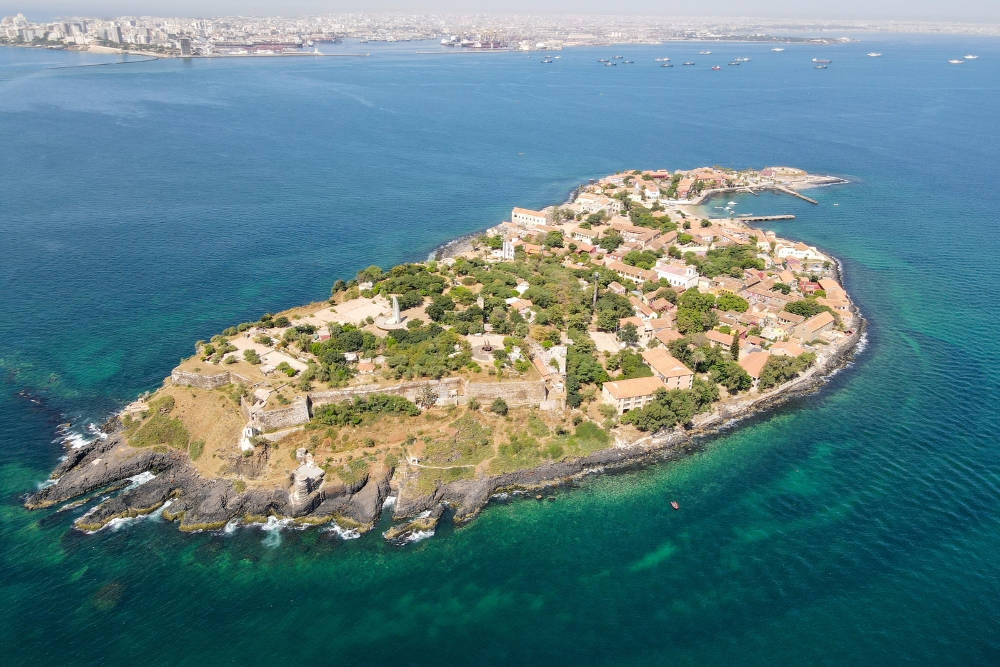
Gorée Island, located approximately 2 kilometers from Dakar, the capital of Senegal, is a testament to human history’s dark chapter. During the 15th to 19th centuries, the island served as a pivotal trading post for European colonizers engaged in the harrowing transatlantic slave trade. The Maison des Esclaves (House of Slaves), a haunting yet essential stop on any visit, offers a sad reminder of this past. Visitors can walk through the halls where enslaved Africans were held captive before being shipped across the ocean, a profoundly moving experience that fosters reflection and remembrance.
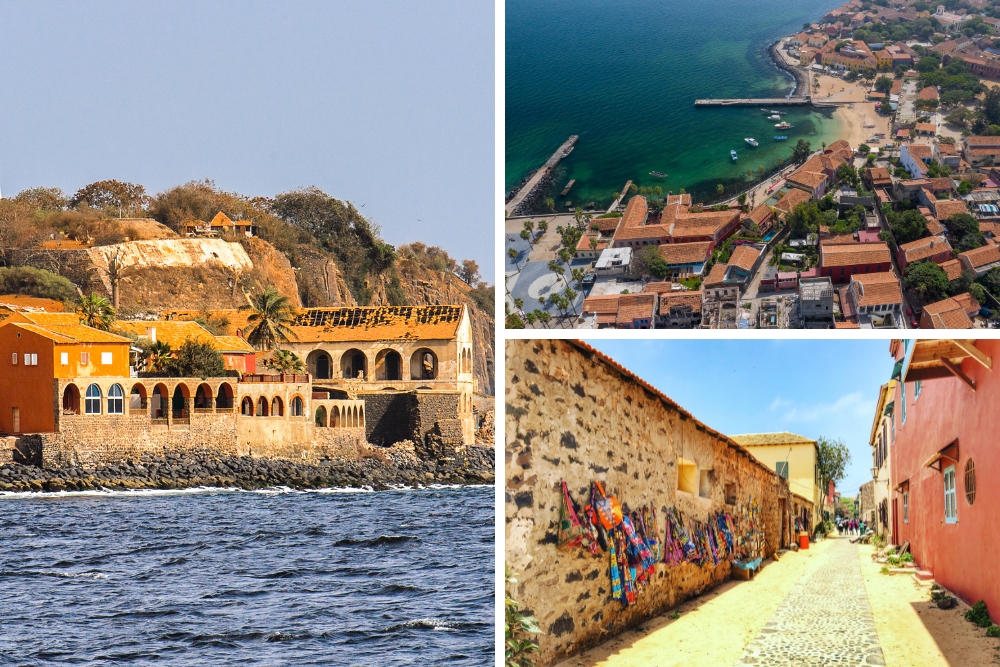
Beyond its sad history, Gorée Island also enchants visitors with its vibrant culture and stunning scenery. The island’s narrow cobblestone streets wind through colorful colonial-era houses adorned with bougainvillea and hibiscus. The tranquil ambiance is enhanced by the absence of motor vehicles, making strolls an absolute delight. The inviting beaches, such as Plage de l’Île de Gorée, offer a serene escape where visitors can bask in the sun and enjoy the azure waters of the Atlantic Ocean. Art galleries and local craft shops showcase the talent of Senegalese artisans, providing an opportunity to take home unique souvenirs. A journey to Gorée Island, with its historical weight and undeniable beauty, is a pilgrimage that offers both reflection and rejuvenation.
2. Djoudj National Bird Sanctuary
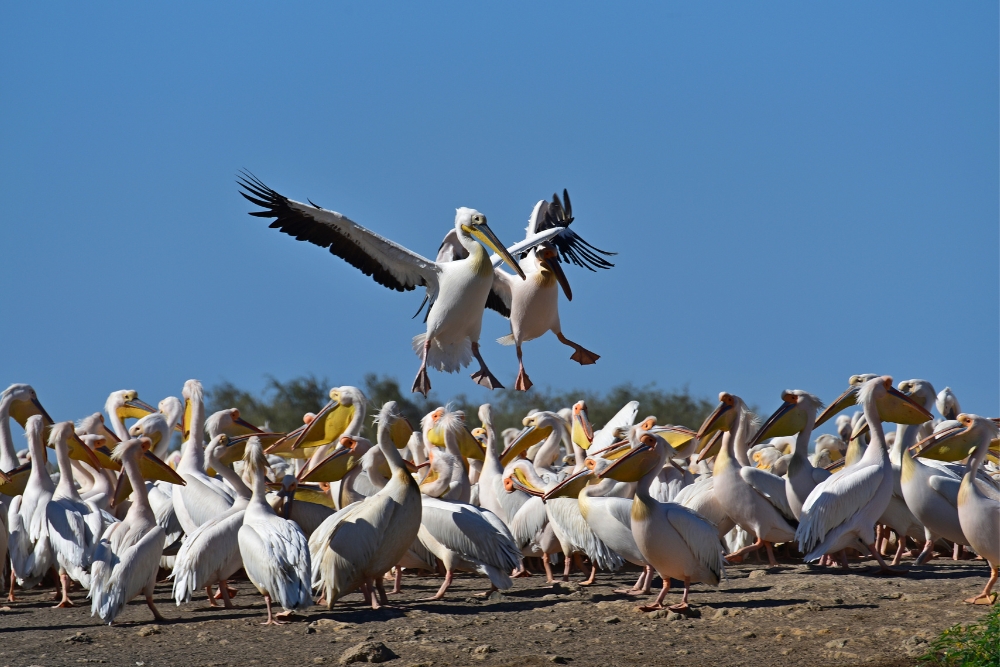
Spanning over 16,000 hectares, Djoudj National Bird Sanctuary is a vital pit stop for millions of migratory birds that traverse the trans-Saharan flyway. Situated near the town of Saint-Louis, this wetland paradise serves as a seasonal home to an astonishing variety of bird species. The highlight of a visit to the sanctuary is undoubtedly the gatherings of majestic pink flamingos, whose numbers can reach an astounding 1.5 million during the peak season. These elegant birds create a surreal sea of pink, leaving visitors awe-struck. Moreover, Djoudj hosts over 400 other bird species, including pelicans, herons, cormorants, and ducks, making it a dream destination for birdwatchers and nature photographers alike.
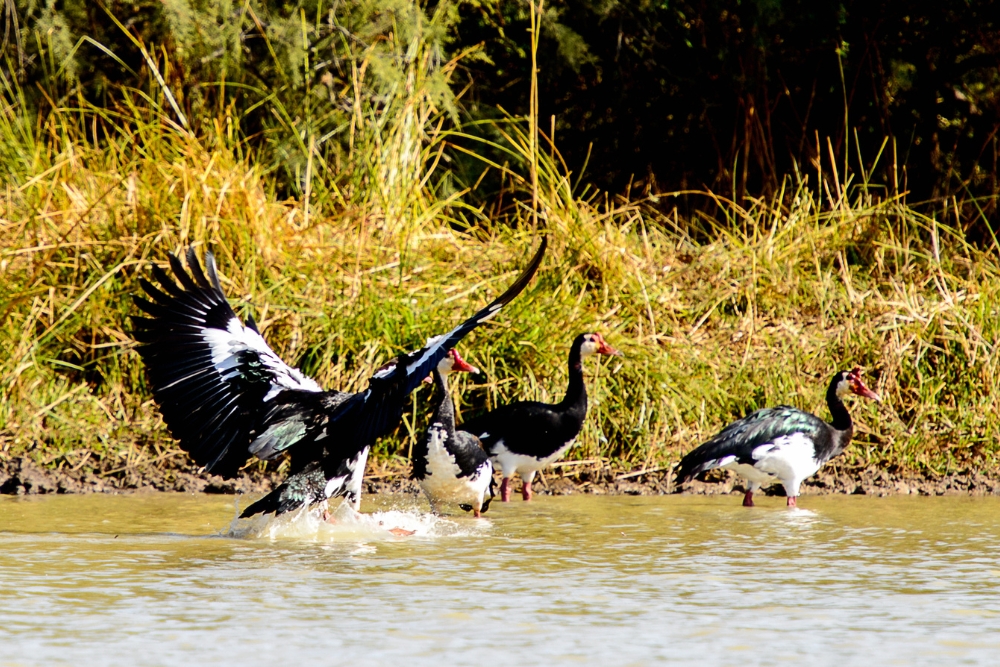
Embarking on a guided boat tour through the tranquil waters of Djoudj’s intricate channels and lakes unveils an unparalleled spectacle of avian diversity. The expert local guides not only provide insights into the ecological significance of the sanctuary but also offer a deeper understanding of the intricate relationships between the resident and migratory bird species. Djoudj’s unique ecosystem, characterized by freshwater ponds, floodplains, and dense aquatic vegetation, also supports a variety of reptiles, mammals, and plant species. A visit to Djoudj National Bird Sanctuary promises an immersive experience in one of West Africa’s most significant bird habitats and a testament to Senegal’s dedication to conservation.
3. Lac Rose (Pink Lake)
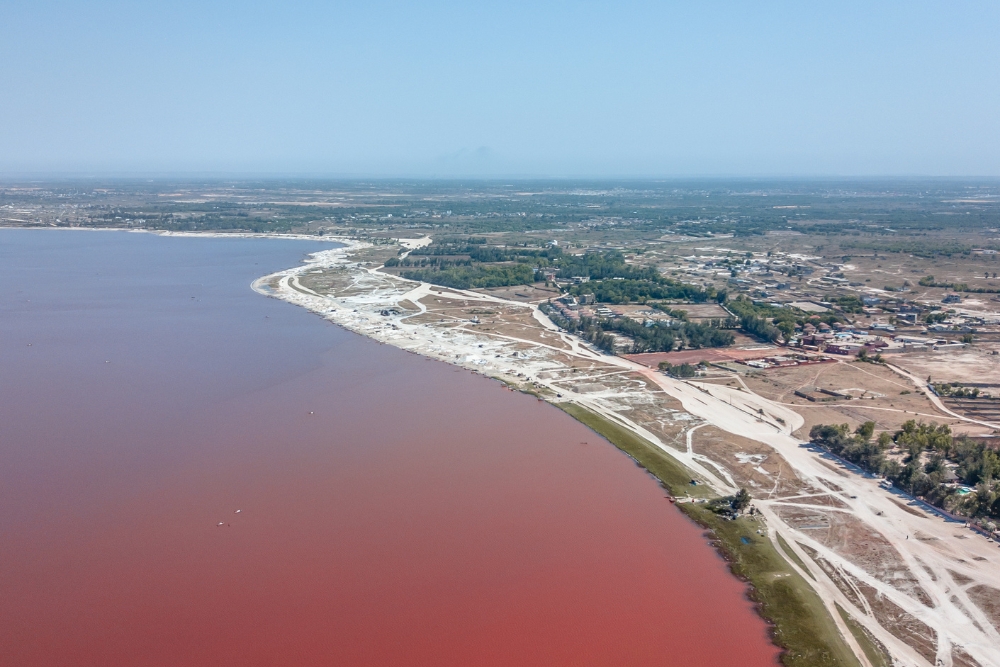
Lac Rose, often referred to as the “Pink Lake,” is a captivating natural wonder located just northeast of Dakar in Senegal. Renowned for its unique rosy hue, this saltwater lake offers a remarkable experience that marries natural science with breathtaking scenery.
Lac Rose’s distinctive pink color results from a mesmerizing combination of high salt concentration and a specific type of algae that thrives in such conditions. The sun’s angle and intensity further enhance the lake’s color, creating a stunning interplay of pink, mauve, and gold that changes throughout the day. The lake’s high salinity, similar to that of the Dead Sea, allows swimmers to float effortlessly on its surface, a sensation that’s both exhilarating and relaxing. Besides its enchanting aesthetics, the lake serves as a hub for salt harvesting, providing visitors with an insight into the local traditional industry. Guided tours often include visits to salt mines and the opportunity to interact with the hardworking salt gatherers, adding a cultural dimension to the natural spectacle.
A trip to Lac Rose offers a multi-faceted experience that engages the senses and the mind. Whether taking a leisurely swim, admiring the shifting colors of the water, or learning about the lake’s ecological and cultural significance, visitors are sure to be captivated by this pink jewel nestled in the Senegalese landscape.
4. Saint-Louis
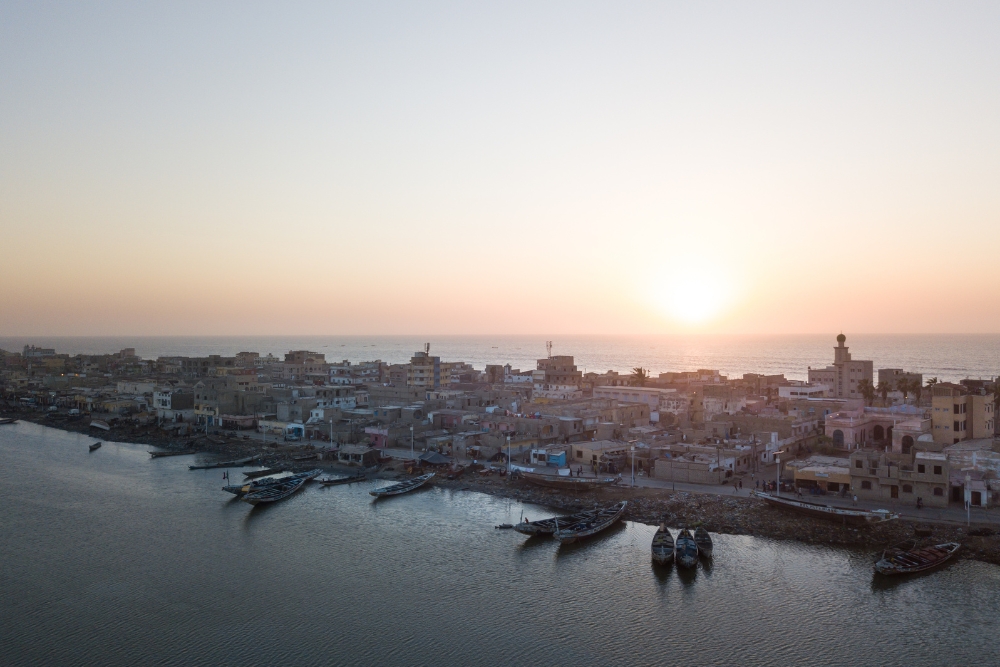
Saint-Louis is a historic town nestled on the northwest coast of Senegal. As the country’s former colonial capital and a UNESCO World Heritage Site, Saint-Louis exudes a captivating blend of colonial architecture, vibrant culture, and a unique geographical location.
Established in the 17th century, Saint-Louis is a living testament to Senegal’s rich history. Its narrow streets are lined with well-preserved colonial buildings that reflect a fusion of European, African, and Islamic influences. The iconic Saint-Louis Bridge, connecting the town to the mainland, adds to the town’s allure. Once a key hub for French colonial administration and trade, Saint-Louis’s strategic position at the mouth of the Senegal River contributed to its historical importance. Visitors can explore the vibrant local markets, where the aroma of fresh fish and spices fills the air, and interact with the friendly locals, known for their warmth and hospitality.
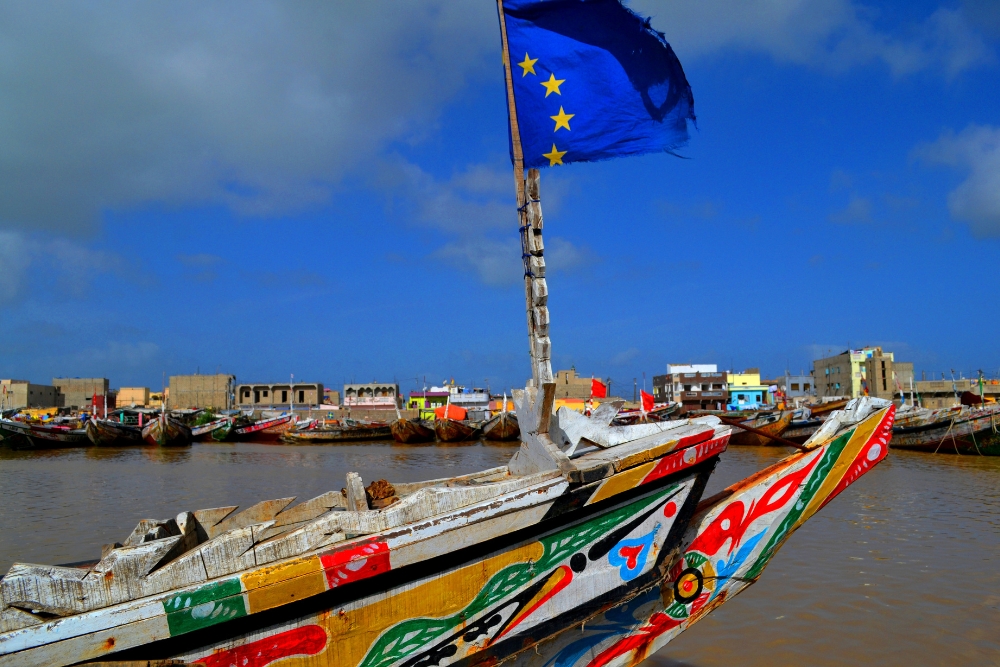
Beyond its historical significance, Saint-Louis is a cultural hotspot. The town hosts the Saint-Louis Jazz Festival annually, attracting international artists and music enthusiasts. The town’s distinct neighborhoods, including the lively Sor district and the tranquil Langue de Barbarie peninsula, offer diverse experiences. For wildlife enthusiasts, a visit to Djoudj National Bird Sanctuary, located nearby, is a must-do. As the first French settlement in West Africa and a melting pot of cultures, Saint-Louis encapsulates the essence of Senegal, making it a captivating destination for history buffs, art lovers, and curious travelers seeking an authentic Senegalese experience.
5. Niokolo-Koba National Park
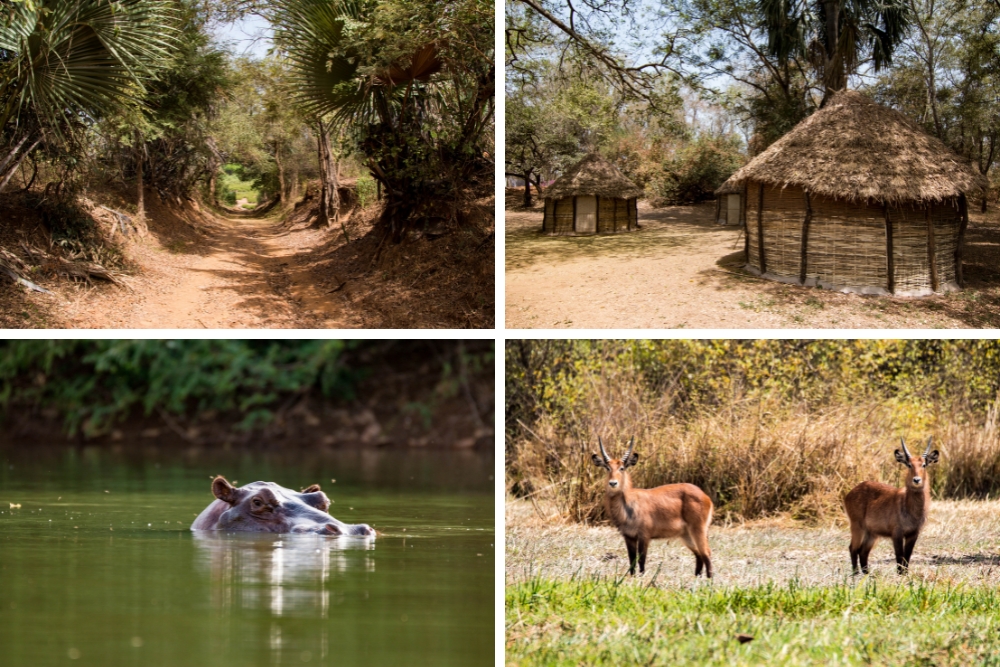
Located in southeastern Senegal, this vast protected area spans over 9,000 square kilometers and offers a remarkable blend of diverse ecosystems and a rich array of wildlife species, being one of the last remaining strongholds of West African wildlife.
Niokolo-Koba National Park is a haven for nature enthusiasts and wildlife lovers alike. Its varied landscapes encompass riverine forests, savannah grasslands, and rugged hills, creating a mosaic of habitats supporting astonishing biodiversity. The park is home to many iconic African species, including elephants, lions, leopards, hippos, and various antelope species. It also boasts a remarkable birdlife with over 300 species recorded, making it a paradise for birdwatchers. The Gambia River flows through the park’s heart, serving as a lifeline for wildlife and local communities. Immersing oneself in Niokolo-Koba’s rugged beauty and pristine landscapes can be done through guided safari tours, boat rides along the river, and even cultural interactions with indigenous communities on the park’s fringes.
Preserving the delicate balance between wildlife conservation and the needs of neighboring communities is at the core of Niokolo-Koba’s management strategy. The park’s UNESCO status underscores its exceptional value and the urgent need to safeguard its unique ecosystems. Visitors to Niokolo-Koba National Park not only have the chance to witness the raw beauty of Africa’s wild heart but also contribute to the region’s sustainable development.
6. Casamance
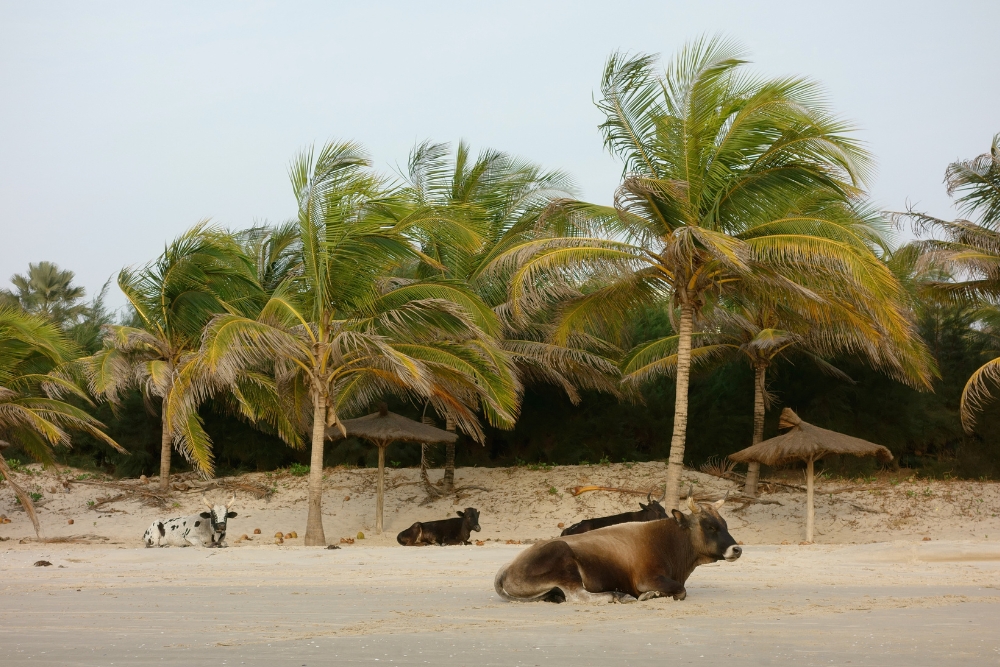
Renowned for its stunning landscapes, vibrant traditions, and serene ambiance, Casamance, nestled in the southern part of Senegal, offers a unique and off-the-beaten-path experience for travelers seeking a deeper understanding of Senegal’s diverse tapestry.
Casamance’s verdant beauty is shaped by its meandering rivers, mangrove swamps, and picturesque beaches along the Atlantic coastline. The region’s fertile land supports a tapestry of rice paddies, cashew plantations, and vibrant markets brimming with local produce. What sets Casamance apart is its distinct cultural identity, with strong ties to the Diola people who call this region home. Traditional villages, adorned with thatched huts and intricate wood carvings, provide a glimpse into the daily lives and age-old customs of the Diola communities. The annual Casamance Carnival is a colorful celebration of local music, dance, and art, drawing visitors into the heart of this energetic culture. However, it’s important to note that in recent history, Casamance has faced some political and security challenges, which travelers should stay informed about before planning their visit.
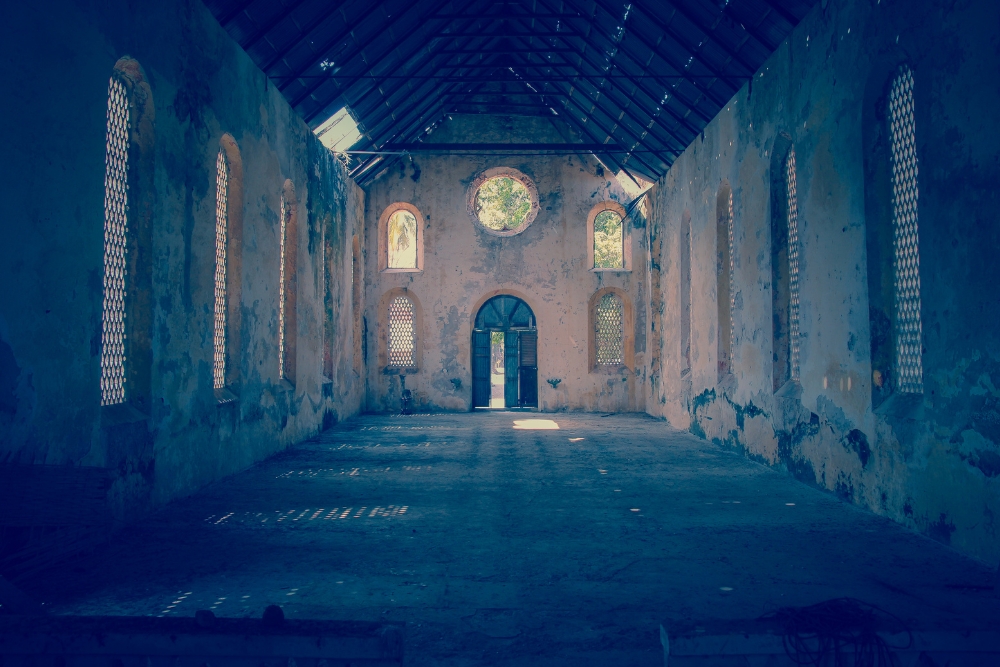
For intrepid travelers seeking an authentic Senegalese experience, Casamance offers a unique blend of nature and culture. Exploring its tranquil waterways by boat, venturing into its vibrant markets, and engaging with the local communities provides a profound insight into the rhythm of life in this enchanting region. As a responsible traveler, it’s advisable to stay updated on the current situation and local conditions. Still, with proper preparation, a journey to Casamance can be a rewarding experience like no other in Senegal.
7. Cap Skirring
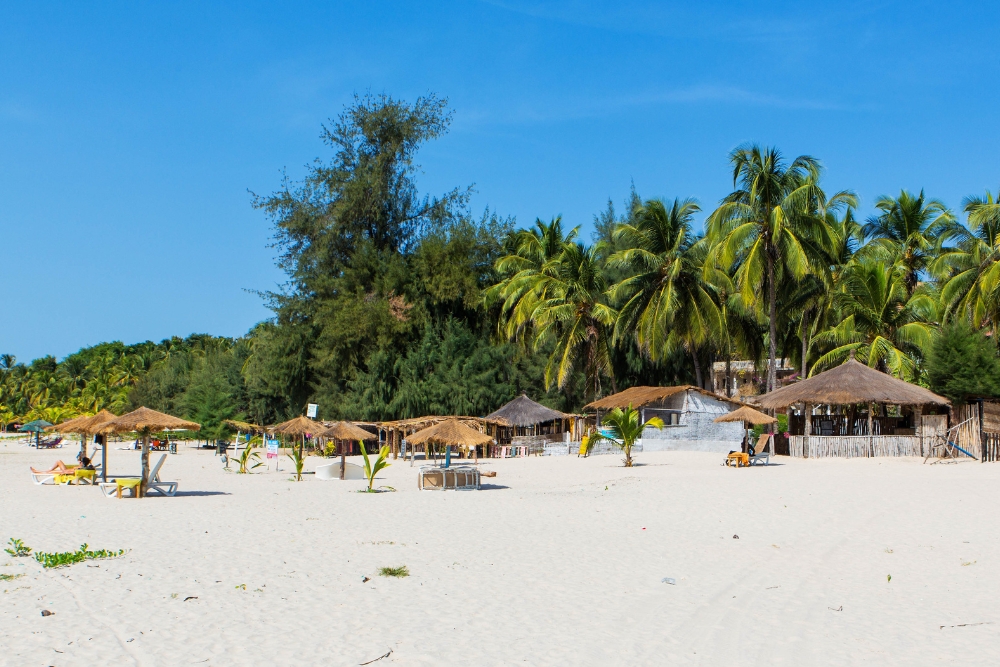
Cap Skirring is a serene beach destination along the stunning coastline of southern Senegal. Known for its pristine sandy shores, azure waters, and laid-back atmosphere, Cap Skirring is a hidden gem that offers travelers a perfect blend of relaxation and natural beauty.
Nestled within the Casamance region, Cap Skirring boasts some of Senegal’s most captivating beaches. The golden sands stretch along the Atlantic Ocean, providing ample space for leisurely strolls, sunbathing, and water sports. The region’s mild climate makes it an attractive year-round destination. Visitors can indulge in surfing, windsurfing, and kayaking, taking advantage of the favorable wind conditions and gentle waves. Beyond the beaches, the lush surroundings of Cap Skirring offer opportunities for eco-tourism and exploration. Nearby, the Boucotte Forest and the Oussouye Forest Reserve showcase the region’s rich biodiversity, home to various bird species and wildlife.
Cap Skirring also embraces the local Diola culture, infusing authenticity into the travel experience. Traditional fishing villages dot the coastline, providing insight into the daily lives of the communities that rely on the sea for their livelihood. Travelers can immerse themselves in the rhythms of everyday life, from watching colorful pirogues (traditional fishing boats) returning with their catch to sampling freshly caught seafood at local eateries. With charming accommodations, from boutique hotels to beachfront resorts, Cap Skirring offers a tranquil escape for those seeking a serene beach getaway with a touch of Senegalese authenticity.
8. Joal-Fadiouth
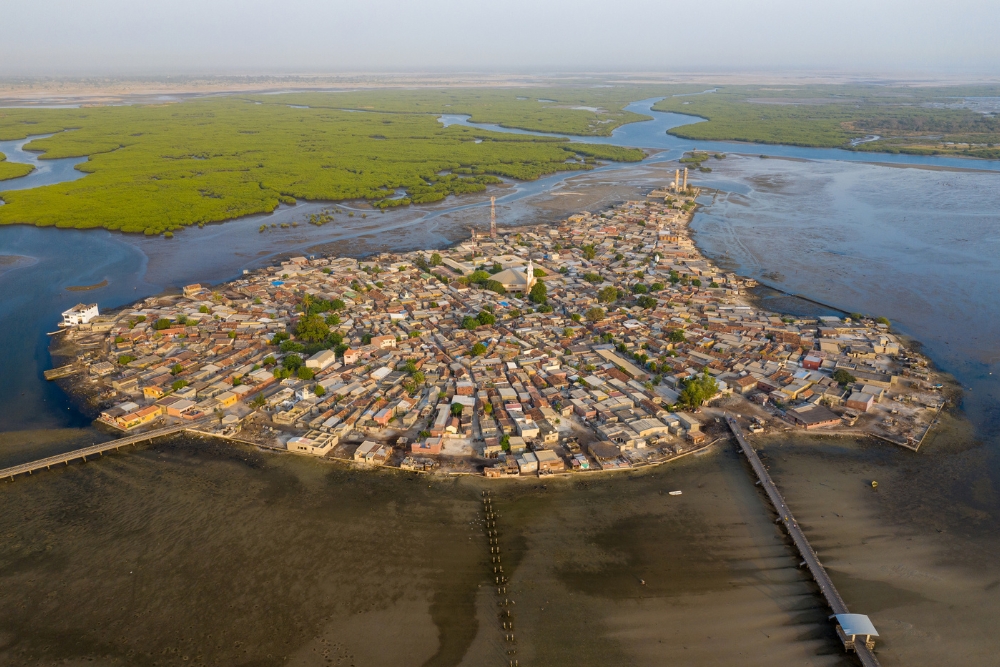
Joal-Fadiouth is about a unique and harmonious blend of history, religion, and stunning coastal beauty in Senegal. Located along the Petite Côte, this captivating destination offers travelers a glimpse into the nation’s diverse cultural heritage and a chance to explore the intriguing juxtaposition of two distinct communities.
Joal, the larger of the two towns, is renowned for being the birthplace of Senegal’s first President, Léopold Sédar Senghor. A visit to his childhood home, now transformed into a museum, provides a fascinating insight into his life and legacy as a poet, philosopher, and statesman. Adjacent to Joal lies Fadiouth, a tiny island accessed by a long wooden bridge. What sets Fadiouth apart is its intriguing ground, entirely composed of seashells. This unique feature provides a stunning backdrop to the island’s Christian and Muslim cemeteries, where ancestors of both faiths rest. This symbolizes the region’s remarkable religious harmony and coexistence. The island also boasts a vibrant market, where local artisans offer crafts and fresh seafood entices visitors’ taste buds.
The atmosphere of Joal-Fadiouth is serene and welcoming, reflecting the warmth of its inhabitants. Strolling through its quaint streets, adorned with colorful bougainvillea, one can feel the fusion of cultures and faiths that shape the town’s character. The tranquil beaches invite leisurely relaxation, while the vibrant markets and cultural sites provide ample opportunities for exploration.
9. Saloum Delta National Park
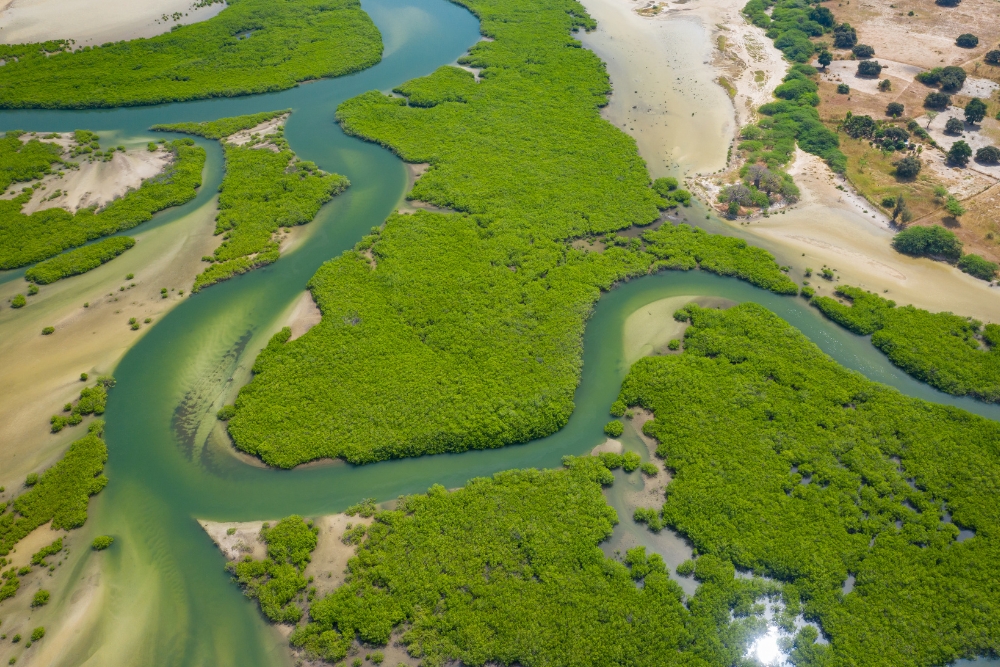
This enchanting delta, where freshwater from the Saloum River meets the Atlantic Ocean, creates a delicate ecosystem teeming with wildlife, mangroves, and stunning landscapes.
Spanning over 76,000 hectares, Saloum Delta National Park is a sanctuary for an impressive bird species, making it a haven for ornithologists and nature enthusiasts. Migratory birds from Europe and Asia find refuge here, while resident species, including flamingos, pelicans, herons, and kingfishers, thrive in the lush wetlands. Guided boat tours along the meandering waterways offer an opportunity to witness this avian spectacle up close, where the mangroves’ stillness and the birds’ distant calls create a tranquil ambiance. The park is also home to various terrestrial animals, including the West African manatee, crocodiles, and several monkey species.
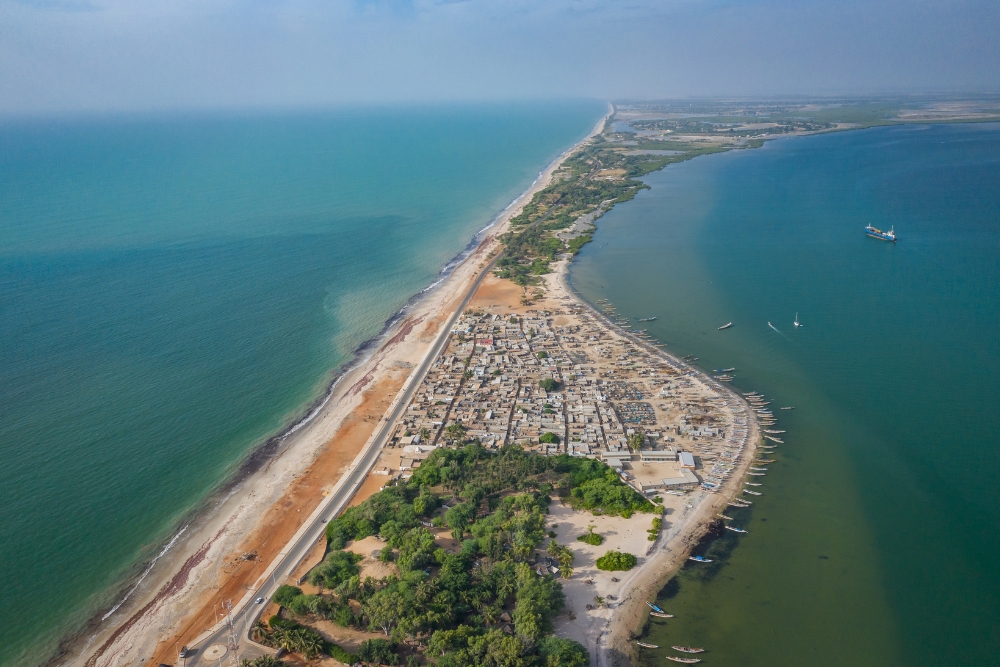
Beyond its biodiversity, Saloum Delta National Park is a cultural treasure trove. Indigenous communities, such as the Serer people, reside in the park’s vicinity, carrying forward traditional fishing and harvesting practices. Visiting these communities provides an immersive cultural experience as you learn about their way of life, craft traditions, and vibrant ceremonies. The park’s unique ecosystem, a fragile balance between land and water, underscores the importance of sustainable conservation efforts.
10. Dakar
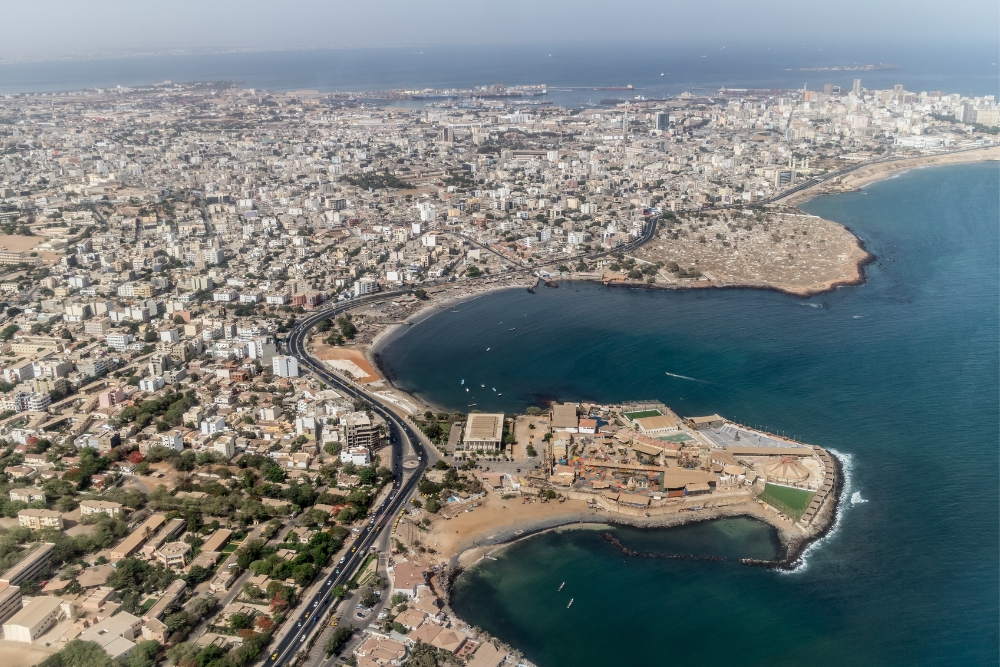
Dakar, Senegal’s capital and the most important city, is a dynamic blend of history, culture, and modernity. Situated on the westernmost tip of Africa, this bustling metropolis is a gateway to the country’s rich heritage and a hub of contemporary African art, music, and cuisine.
Dakar’s bustling markets, such as the colorful Marché Kermel and the lively Sandaga Market, provide a sensory journey through local life and commerce. The African Renaissance Monument, an iconic towering sculpture overlooking the Atlantic Ocean, symbolizes Senegal’s resilience and determination. The city is also a center of cultural expression, with venues like the Institut Français and the Théâtre Daniel Sorano showcasing a vibrant array of theatrical performances, concerts, and art exhibitions. The Gorée Island, just a short ferry ride away, is a poignant reminder of the transatlantic slave trade and offers a reflective experience through its historical sites and captivating architecture.
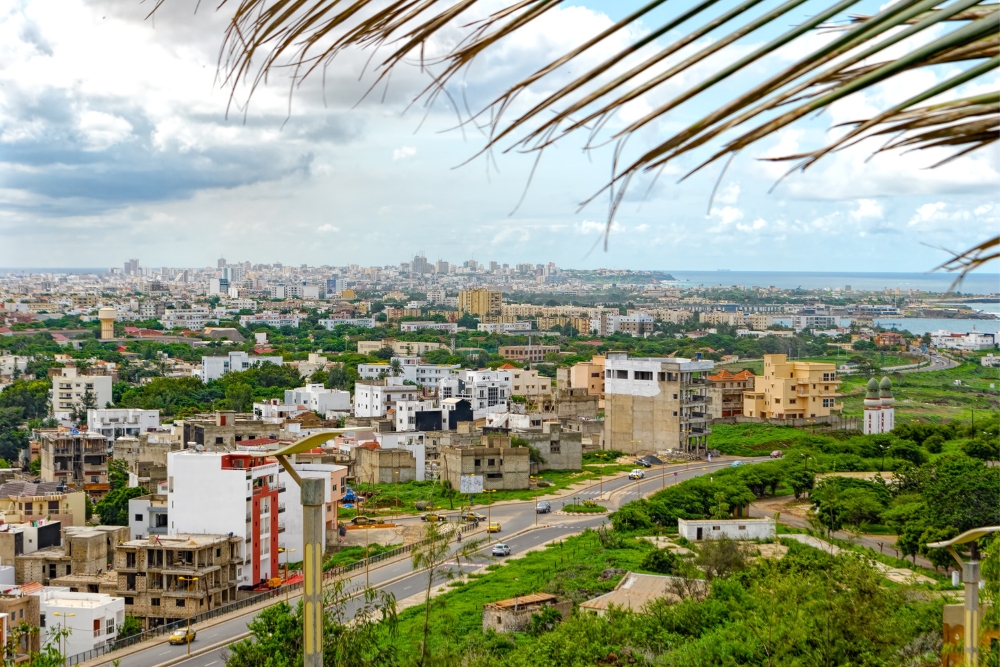
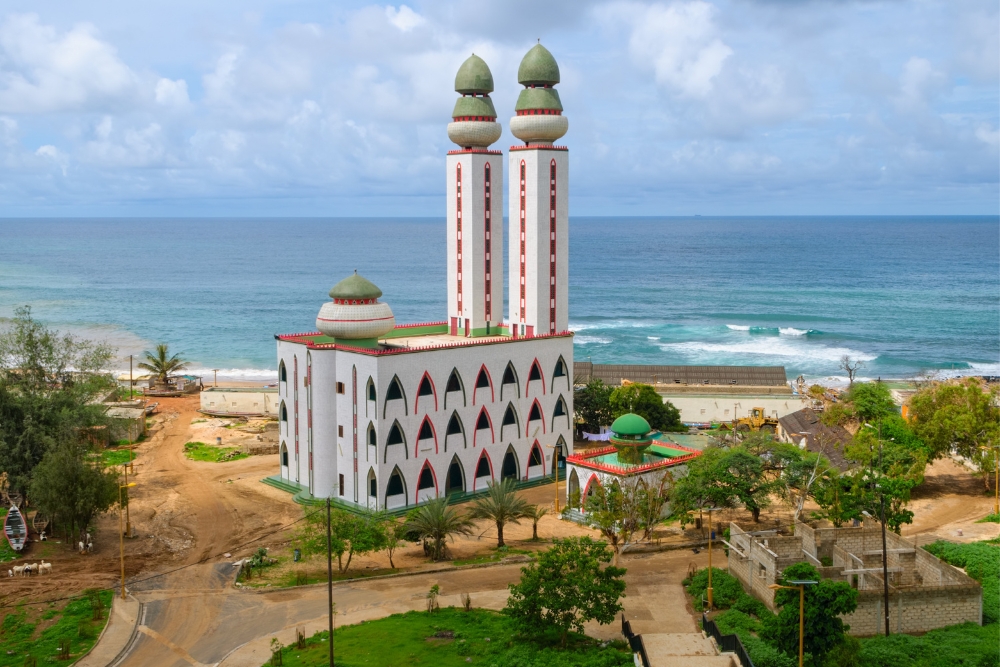
Dakar’s appeal extends to its culinary scene, a melting pot of flavors reflecting the diverse ethnicities that call the city home. From savoring a traditional Thieboudienne (Senegal’s national dish) at a local restaurant to enjoying vibrant street food stalls offering mouthwatering snacks, the city caters to all palates. Dakar’s energetic nightlife pulses with the beats of Senegalese music genres like Mbalax, and venues such as Just4U and Biscuiterie de Médina offer a chance to dance the night away. With its mix of heritage, modernity, and vibrant energy, Dakar encapsulates the essence of Senegal and serves as a captivating introduction to the country’s cultural and artistic richness.
Tips and tricks for those who want to travel to Senegal
Now that we’ve seen which are the most popular tourist attractions and best places in Senegal let’s find out some other things about this beautiful African country:
1. What are the essential travel tips for visitors planning a trip to Senegal for the first time?
When planning a trip to Senegal, it’s essential to consider a few key travel tips. Firstly, ensure your passport is valid for at least six months beyond your intended departure date. Checking with your local embassy or consulate for any visa requirements is also advisable.
Secondly, it’s important to research and understand the local customs and etiquette. Senegal is a predominantly Muslim country, so it is respectful to dress modestly, particularly when visiting religious sites or rural areas. It is also customary to greet people with a handshake and converse politely before getting to the main topic.
Thirdly, it’s recommended to take precautions regarding personal safety and health. While Senegal is generally a safe country, it’s always wise to take common-sense precautions, such as avoiding isolated areas at night and keeping an eye on your belongings. Additionally, it’s advisable to consult a healthcare professional regarding necessary vaccinations or medications before traveling to Senegal.
2. Which is the best time of the year to visit Senegal?
The best time to visit Senegal largely depends on your preferences and the activities you wish to engage in. Generally, the dry season, which runs from November to May, is considered the best time to visit. The weather is typically warm and sunny during this period, making it ideal for exploring the country’s attractions, wildlife reserves, and coastal regions.
However, it’s worth noting that Senegal experiences a distinct wet season from June to October, characterized by higher rainfall and humidity. Despite the rain, this season also has its advantages. The countryside becomes lush and green, and birdwatching enthusiasts will find migratory birds abundant. Traveling during this season can also offer more affordable prices and fewer crowds.
3. What are the primary entry points for international travelers arriving in Senegal?
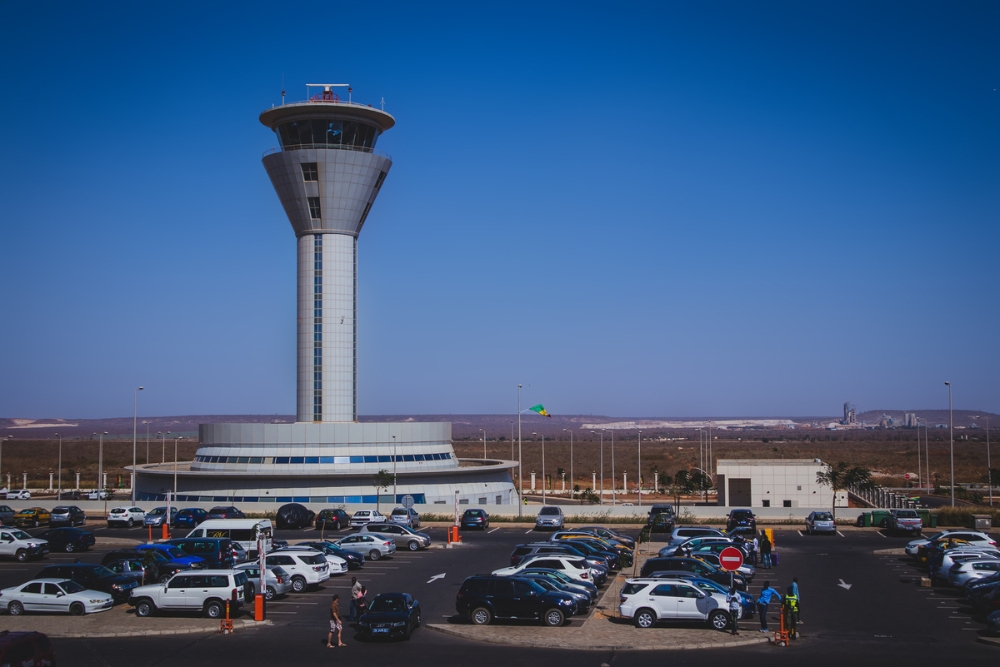
The primary entry point for international travelers arriving in Senegal is Blaise Diagne International Airport (DSS), located near Dakar. This modern airport serves as the main gateway to the country and offers connections to various international destinations.
Another entry point is Leopold Sedar Senghor International Airport (DKR), also located in Dakar. Although this airport is mainly used for domestic flights, it also receives some international flights from neighboring countries.
Travelers should check their flight itineraries and consult with airlines to determine the available airports and routes.
4. Is Senegal a safe country? What safety precautions should you take and where?
Senegal is generally considered a safe country for travelers. However, as with any travel destination, it’s important to exercise caution and take necessary safety precautions. Here are a few tips to ensure a safe and enjoyable trip to Senegal:
- Be vigilant with your belongings, particularly in crowded areas or tourist sites.
- Avoid displaying signs of wealth, such as expensive jewelry or gadgets, as it may attract unwanted attention.
- Use reputable transportation services and avoid traveling alone at night, especially in isolated areas.
- Stay informed about local news and heed any travel advisories or warnings from your embassy or consulate.
- Be cautious when swimming in the ocean and adhere to any warning signs or instructions from local authorities.
It’s also advisable to consult with locals, hotel staff, or reputable tour operators for guidance on specific safety precautions in the areas you plan to visit.
5. What are the best 3 Senegalese dishes for travelers to try during their visit?
Senegal is a culinary paradise that offers a variety of flavors and dishes influenced by its diverse ethnic groups. Here are three must-try Senegalese dishes for travelers:
Thieboudienne: Considered the national dish of Senegal, Thieboudienne is a flavorful rice and fish dish. It typically consists of fish, vegetables, and rice cooked in a rich tomato-based sauce seasoned with herbs and spices. This delicious and hearty meal is an accurate representation of Senegalese cuisine.

Yassa: Yassa is a tangy and aromatic dish made with marinated chicken or fish, onions, mustard, and lemon juice. The ingredients are cooked together to create a flavorful sauce that infuses the meat with delicious flavors. Yassa is often served with rice or couscous.
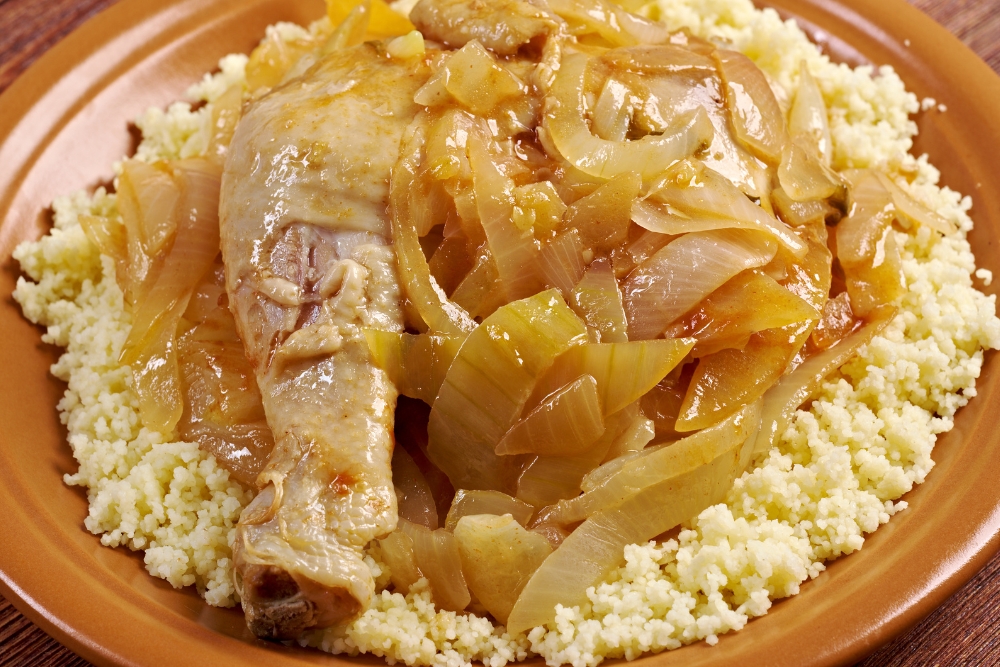
Maafe: Maafe is a traditional Senegalese dish with a thick peanut sauce, meat, vegetables, and spices. It can be made with various meats such as beef, lamb, or chicken and is often served with rice or couscous. Combining the creamy peanut sauce and tender meat creates a delightful and comforting dish.
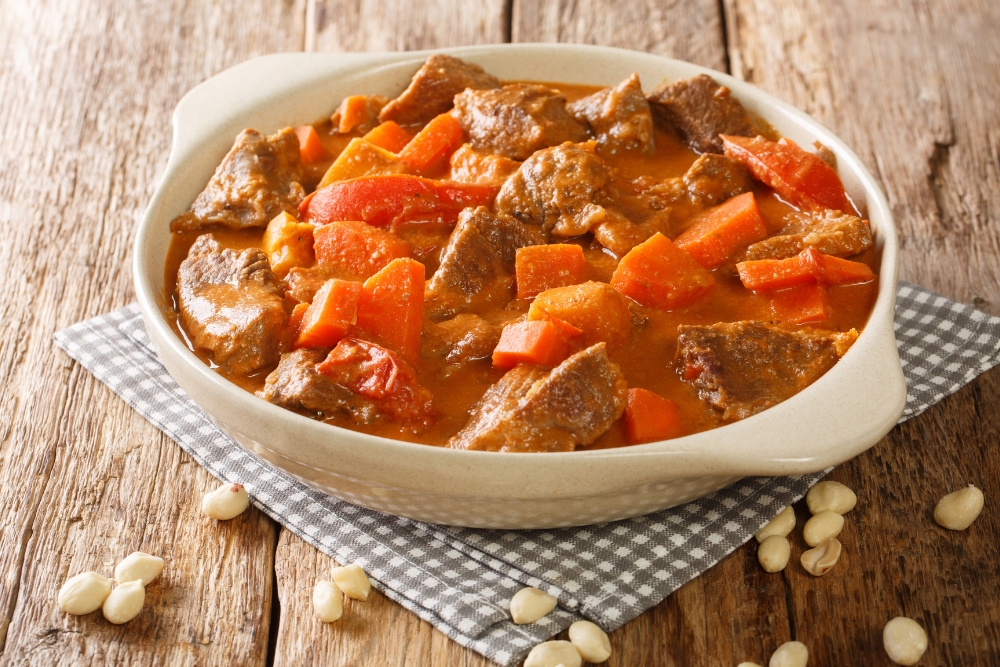
These are just a few examples of the many delightful dishes that Senegal has to offer. Exploring the local cuisine is essential to experiencing the country’s vibrant culture.
6. What are the available options for transportation within the country, and which is the most practical for tourists?
Senegal offers several transportation options for travelers to explore the country. Here are the main modes of transportation available:
- Taxis: Taxis are a common form of transportation in Senegal, particularly in urban areas. They can be easily hailed on the street or found at designated taxi stands. Negotiating the fare before starting the journey is advisable, as taxis in Senegal usually do not use meters.
- Car Rental: Renting a car is convenient for travelers who prefer more independence and flexibility in their itinerary. Several international car rental agencies operate in Senegal, particularly in major cities and airports. However, it’s important to note that driving conditions in Senegal can be challenging, and road signage may be limited in some areas.
- Public Transportation: Senegal has a well-developed network of public transportation, including buses and minibusses known as “cars rapides.” These options are more affordable than taxis and are commonly used by locals. However, they can be crowded and may not always adhere to strict schedules.
- Domestic Flights: Domestic flights are available for longer distances or to reach more remote areas. Air Senegal operates scheduled flights to various destinations within the country, including Saint-Louis, Ziguinchor, and Cap Skirring.
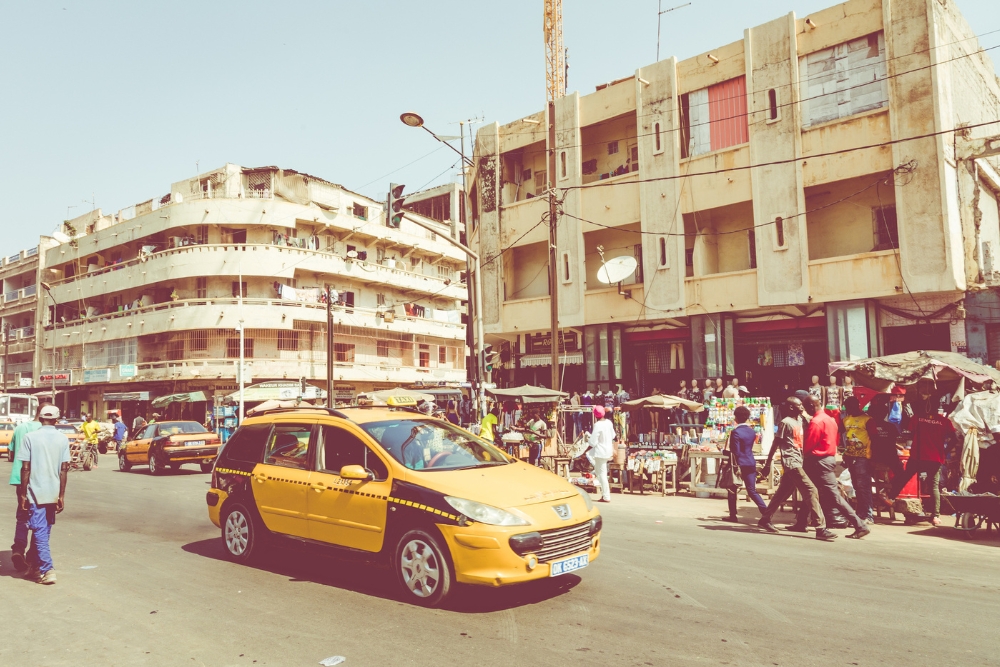
For most tourists, a combination of taxis, public transportation, and organized tours is often the most practical way to get around Senegal. Organized tours can provide convenient transportation and knowledgeable guides, particularly for visiting attractions outside major cities.
7. How do local customs and etiquette vary across different regions of Senegal, and what should travelers be aware of?
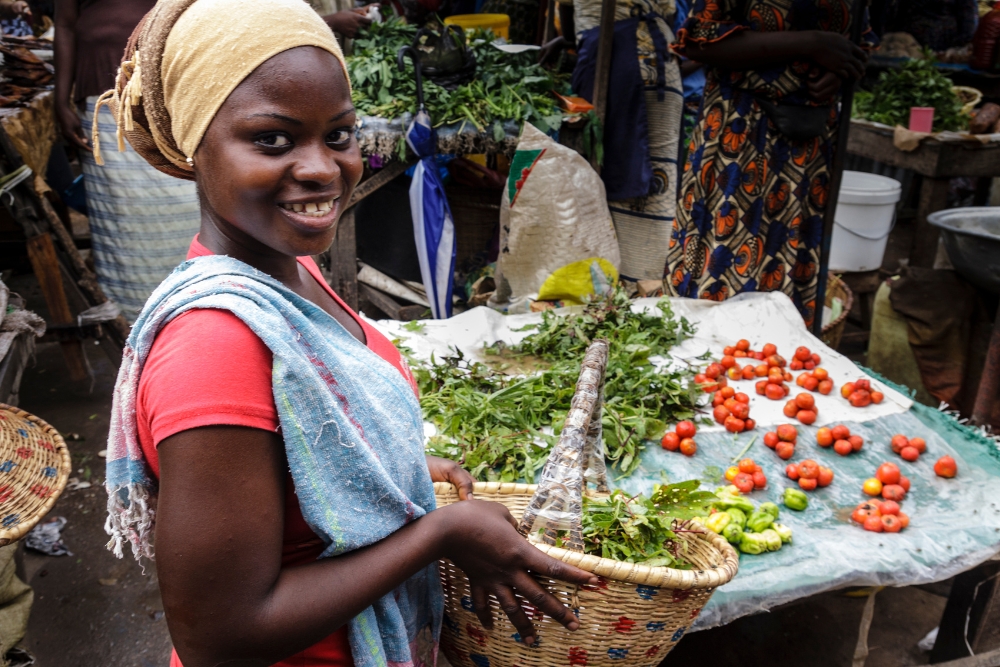
Senegal is known for its warm hospitality and vibrant cultural traditions. However, customs and etiquette can vary across different regions and ethnic groups. Here are a few general customs and etiquette tips to keep in mind:
- Greetings: It is customary to greet people with a handshake and converse politely before getting to the main topic. When greeting elders or people of higher status, it’s respectful to use both hands during the handshake.
- Dress Code: Senegal is a predominantly Muslim country, and it’s advisable to dress modestly, particularly when visiting religious sites or rural areas. Women should consider wearing loose-fitting clothing that covers their shoulders and knees. Men may also find it appropriate to dress conservatively in certain situations.
- Punctuality: Senegalese time can be more relaxed than in some other cultures. It’s not uncommon for events or meetings to start later than the scheduled time. However, punctuality is still advisable, particularly for formal occasions.
- Respect for Elders: Senegalese society places great importance on respect for elders. Showing deference and using appropriate titles when addressing older individuals is customary.
While these customs apply to many regions in Senegal, it’s important to note that cultural norms can vary across different ethnic groups and communities. It’s always advisable to observe and respect local customs and seek guidance from locals or tour guides when in doubt.
8. Could you provide insights into the range of accommodations available in Senegal, from luxury to budget options?
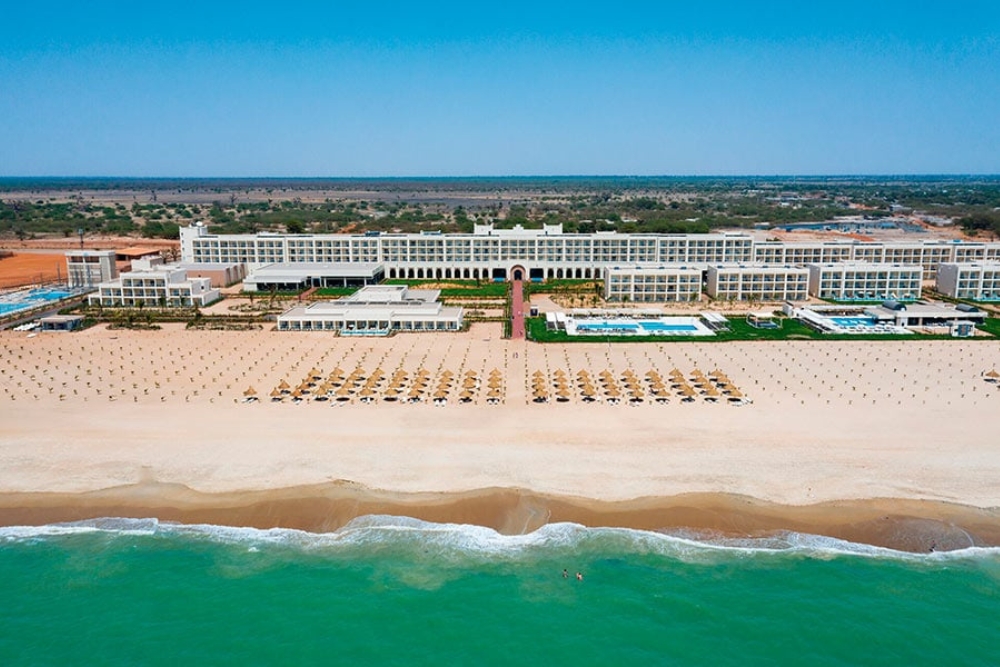
Senegal offers a range of accommodations to suit various budgets and preferences. From luxury resorts to budget-friendly guesthouses, here are some options to consider:
- Luxury Hotels and Resorts: In major cities and popular tourist destinations, luxury hotels and resorts provide world-class amenities and services. These establishments often feature swimming pools, spas, restaurants, and other facilities. Some notable luxury hotels in Senegal include Terrou-Bi in Dakar, Lamantin Beach Hotel in Saly, and Les Almadies in Cap Skirring.
- Mid-Range Hotels and Guesthouses: Mid-range hotels and guesthouses are widely available for travelers seeking comfortable accommodations at more affordable prices. These establishments offer clean and comfortable rooms, often with amenities such as air conditioning, Wi-Fi, and on-site restaurants. They can be found in both urban areas and tourist destinations throughout Senegal.
- Budget Guesthouses and Hostels: Budget-conscious travelers can find a range of guesthouses and hostels that offer affordable accommodation options. These establishments provide basic facilities and are often located in urban areas or near popular tourist attractions. They are popular among backpackers and those looking to connect with fellow travelers.
Researching and booking accommodations in advance is important, particularly during peak travel seasons or for popular attractions. Websites such as Booking.com and TripAdvisor can provide a comprehensive list of available accommodations and reviews and ratings from previous guests.
9. What unique cultural festivals or events take place in Senegal that travelers might want to plan their visit around?
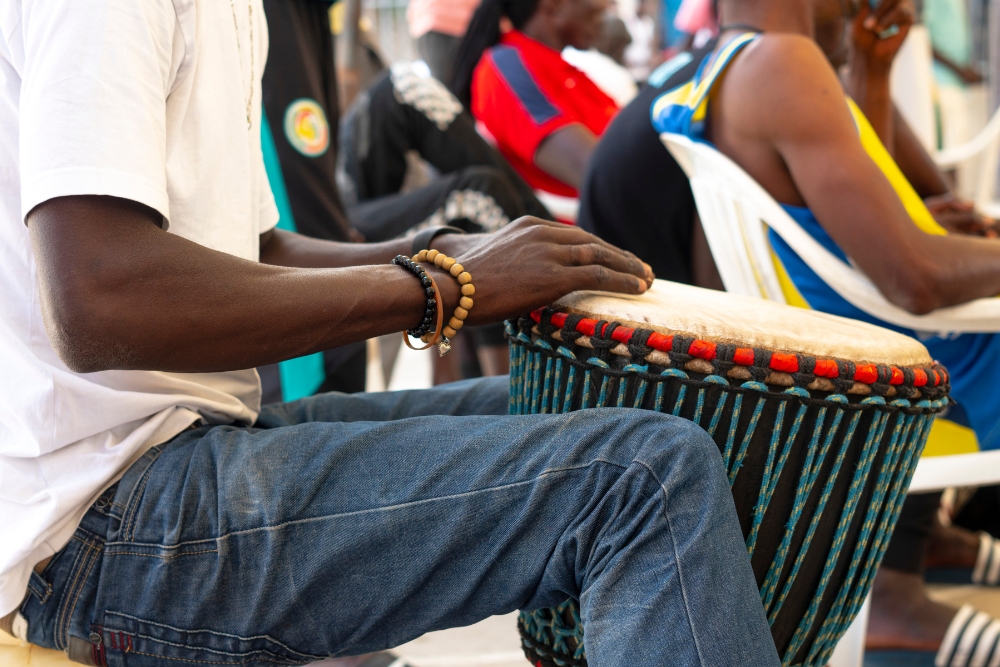
Senegal is a country rich in cultural traditions, and there are several unique festivals and events that travelers might want to plan their visit around. Here are three notable cultural festivals in Senegal:
- Saint-Louis Jazz Festival: Held annually in the historic town of Saint-Louis, the Saint-Louis Jazz Festival is a celebration of music that attracts local and international artists. This festival showcases a fusion of traditional Senegalese rhythms with jazz, blues, and other genres. Travelers can enjoy live performances, street parades, and vibrant music-filled evenings.
- Festival du Sahel: The Festival du Sahel is a cultural extravaganza that takes place in the city of Ziguinchor in the Casamance region. This festival celebrates the region’s cultural diversity with music, dance, theater, and traditional ceremonies. It provides an opportunity to immerse oneself in the vibrant traditions of the Casamance people.
- Grand Magal of Touba: The Grand Magal of Touba is an important religious pilgrimage attracting millions of Mouride Brotherhood followers. The pilgrimage takes place in the holy city of Touba and commemorates the life and teachings of Sheikh Amadou Bamba, the founder of the Mouride Brotherhood. Travelers can witness the spiritual fervor and participate in various religious ceremonies.
These are just a few examples of the many cultural festivals and events in Senegal throughout the year. Travelers are encouraged to check local event calendars and plan their visit accordingly to experience the rich cultural heritage of Senegal.
10. Which are the most popular beaches in Senegal?
Senegal is blessed with beautiful coastlines and pristine beaches that attract beach lovers from around the world. Here are three of the most popular beaches in Senegal:
Saly: Located on the Petite Côte, Saly is one of Senegal’s most popular beach destinations. It offers a range of resorts, beachfront hotels, and water sports activities. The beach at Saly is known for its golden sands, warm waters, and vibrant atmosphere.
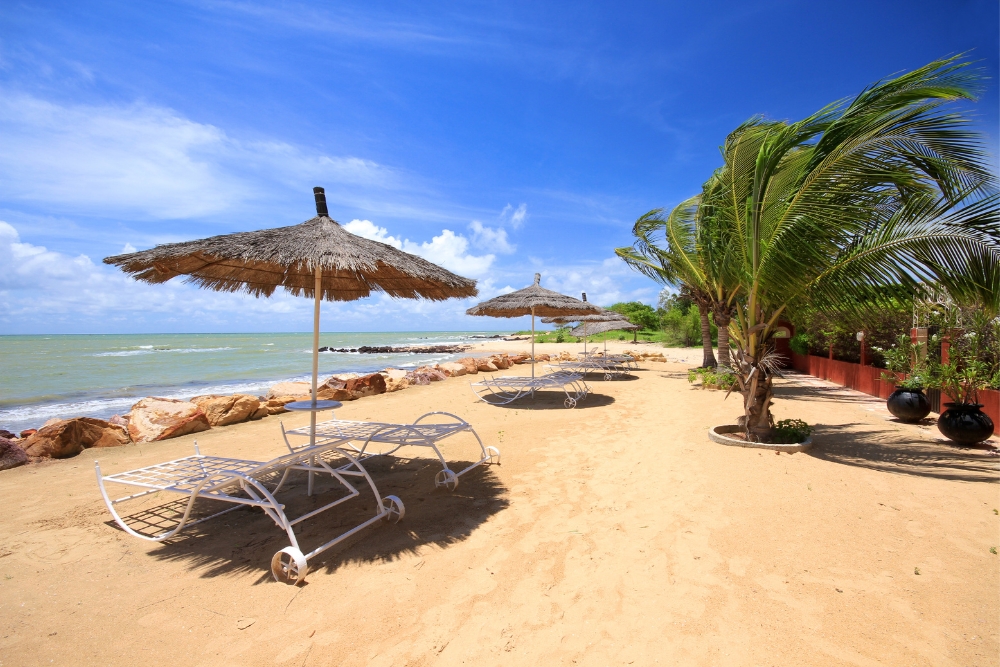
Cap Skirring: Situated in the Casamance region, Cap Skirring is a picturesque beach town known for its stunning white sandy beaches and crystal-clear waters. It offers a more laid-back and tranquil setting compared to the bustling tourist areas of Dakar and Saly.
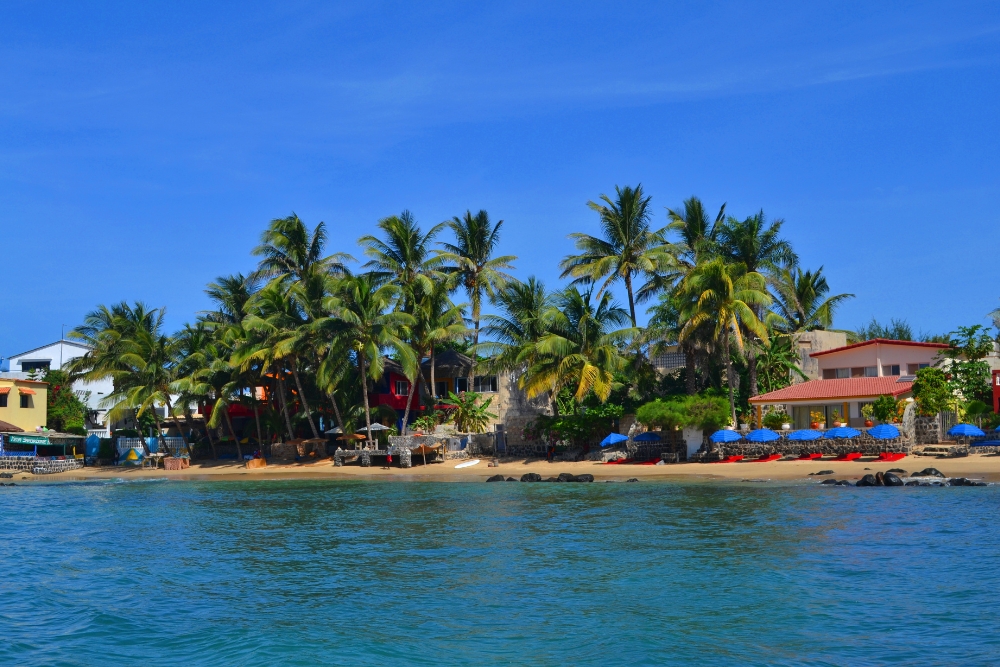
N’Gor Island: Just a short boat ride from Dakar, N’Gor Island is a hidden gem that offers a secluded beach getaway. The island is known for its pristine beaches, turquoise waters, and excellent surfing conditions. It’s a perfect destination for those seeking a quieter beach experience.
These beaches are just a few examples of the many coastal destinations that Senegal has to offer. Whether you prefer lively beach resorts or secluded stretches of sand, Senegal has something to suit every beach lover’s taste.
In conclusion, Senegal is a captivating travel destination with a rich history, vibrant culture, and breathtaking landscapes. From exploring the bustling streets of Dakar to witnessing the natural wonders of national parks, Senegal has something to offer every traveler. By following essential travel tips, respecting local customs, and planning your visit around unique festivals, you can ensure a memorable and enjoyable trip to this extraordinary country.
You may also like: 10 best tourist attractions in Ghana

